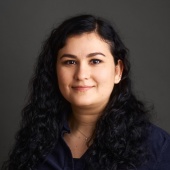HR-TEM imaging
High-resolution imaging with a transmission electron microscope (TEM) for capturing morphology, crystal structure, and defects at nanometer resolution.
Typically, several images with varying magnifications are taken to get a good overview of the sample.
We also provide FIB preparation to analyze the cross-section of any specific site of interest, including microelectronic stacks and loose powders.
HR-TEM for atomic-level resolution, STEM for high-contrast images, and cryo-TEM for sensitive samples are also possible.
For complementary compositional analysis along with the structural data, TEM-EDX and TEM-EELS elemental analyses are available.
Contact us for more details.
- Suitable sample matrices
- Dry, solid materials, powders, thin films, and coatings
- Required sample quantity
- 1x1 cm or a few milligrams
- Typical turnaround time
- 2 – 3 weeks after receiving the samples
- Detection limit
- 0.3 nm
- Available quality systems
- Measurlabs validated method
- Device types
- Method expert
Price
We also charge a 97 € service fee per order.
Large batches of samples are eligible for discounts.
Questions? We're happy to help.
Questions? We're happy to help.
Ask for an offer
Fill in the form, and we'll reply in one business day.
Have questions or need help? Email us at info@measurlabs.com or call our sales team.
